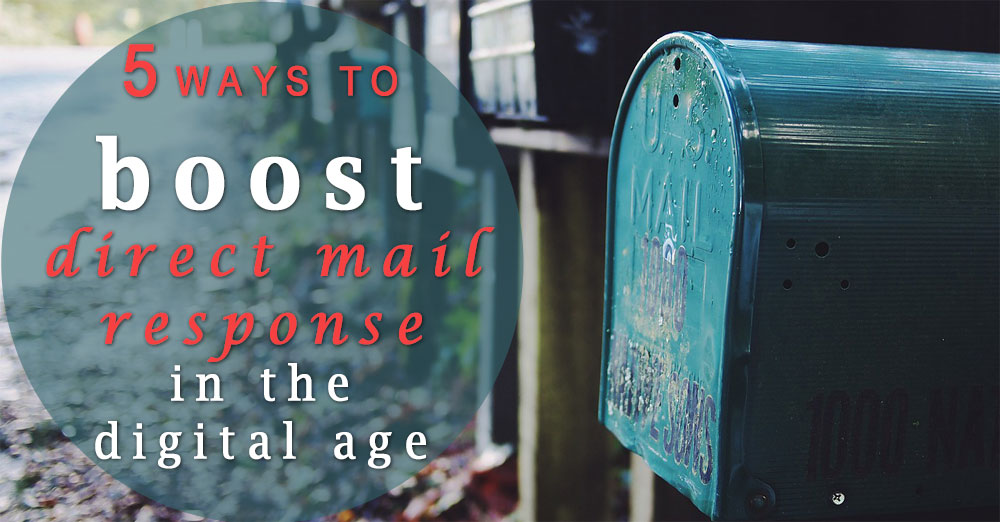
 How to make a direct mail campaign stand-out and get results in a world of online marketing messages
How to make a direct mail campaign stand-out and get results in a world of online marketing messages
Purchasing decision makers and influencers are undoubtedly relying on the Internet for researching products, services and vendors. In an age where buyers are staring at screens instead of their inboxes, how can direct mail marketing produce results? The fact is, they can — but direct mail campaigns must incorporate the proper techniques to be successful.
Here are a few of the most important:
1. Personalize
The more your direct mail piece looks and feels like it was designed for each individual recipient, the greater your response rate will be.
Thanks to new variable data printing technology, it is not only possible but cost-efficient to personalize direct mail pieces by not only inserting a recipient’s name, but also with unique content and imagery based on his/her buying patterns, order history, industry and other factors culled from the list database.
2. Stress Benefits
Many companies err by dwelling on company/product/service features in their marketing communication. This is seldom effective in generating a response, and direct mail is certainly no exception.
In B2B, buyers and influencers are motivated when they see business and/or personal benefits screaming at them in the mailing. Business benefits include saving money, improving efficiency, reducing overhead and becoming more sustainable; personal benefits include earning a promotion, reducing stress and solving a crucial business problem. Items such as these should be the leading themes of your direct mail campaign strategy.
3. Demonstrate Credibility
Direct mail is inherently met with skepticism, sometimes even when the recipient is familiar with the sender, but always when the sender is an unknown quantity. To overcome doubt, the mailing must include prominent credibility elements to assure the recipient the sender is a reliable enterprise.
Credibility elements include testimonials, accreditations, a list of recognizable customers, and a list of awards.
4. Present a Strong Offer
Ultimately, a mailing will stand or fall on the quality of the offer. Even if every other element of the piece is executed to perfection, unless the recipient is motivated to act, the mailing will figuratively and literally wind up in the dustbin of history.
Elements of a strong offer include:
Relevance — The offer makes sense for the recipient’s business. If the recipient is a law firm, an offer for a warehouse picking system is not relevant. Timing is also key here. For instance, if you send a “Welcome to Your New Home” piece to a new mover 6 months after they move, it’s no longer relevant. You have to hit them at the exact moment of their move.
Scarcity — People are motivated to act when supplies are limited, and when an offer comes with an expiration date. Businesses are slow to change and avoid risk; give them an open-ended offer and they are sure to delay.
Value — Few companies will act on an offer unless the risk-reward calculation is favorable. Getting $10 off a $1,000 order is not terribly enticing, whereas $400 off is almost certain to stimulate a response.
5. Manage Your List
If one thing is more important than the offer, it is the quality of your direct mail house list. Sending the right message and the right offer to the wrong recipient (see the relevance example above) produces zero response, each and every time. A strong list takes TLC to nurture, but pays off in generating a solid response rate.
Key elements of a great house list include:
Up to date — Jobholders, job titles, addresses and company names continually change; thus, lists must be updated proactively and continuously.
Segmented — Segmentation is the key to relevance. Being able to separate, say, attorneys from warehouses enables you to craft relevant mailings to each segment, rather than sending one, watered-down message to both.
Detailed — A name and address only gets you so far; lists are much more valuable when they contain information such as the company’s industry, other locations, email addresses, annual revenue, number of employees, etc. This information allows you to segment lists in various ways to support ultra-high level targeting and messaging. The result? Big boost in response rates.
The one advantage direct mail marketers have is one they have never had before: novelty. Because the world has gone Internet crazy, receiving a piece of actual mail is interesting enough to notice. Follow these guidelines, and you’ll be able to capitalize on the novelty factor and make your campaign a success.
Editorial Staff
Latest posts by Editorial Staff (see all)
- Adapting Regulatory Frameworks to the Challenges of Financial Industry in the Digital Era - March 19, 2024
- How to Sell Company Merch Online With Print on Demand - March 11, 2024
- Unlocking Easy Ways To Start A Successful Fitness Brand - February 15, 2024
- The Impact of Digital Transformation on Traditional Business Models - November 8, 2023
- Personal Trainer Marketing Strategies And Tips - November 6, 2023
